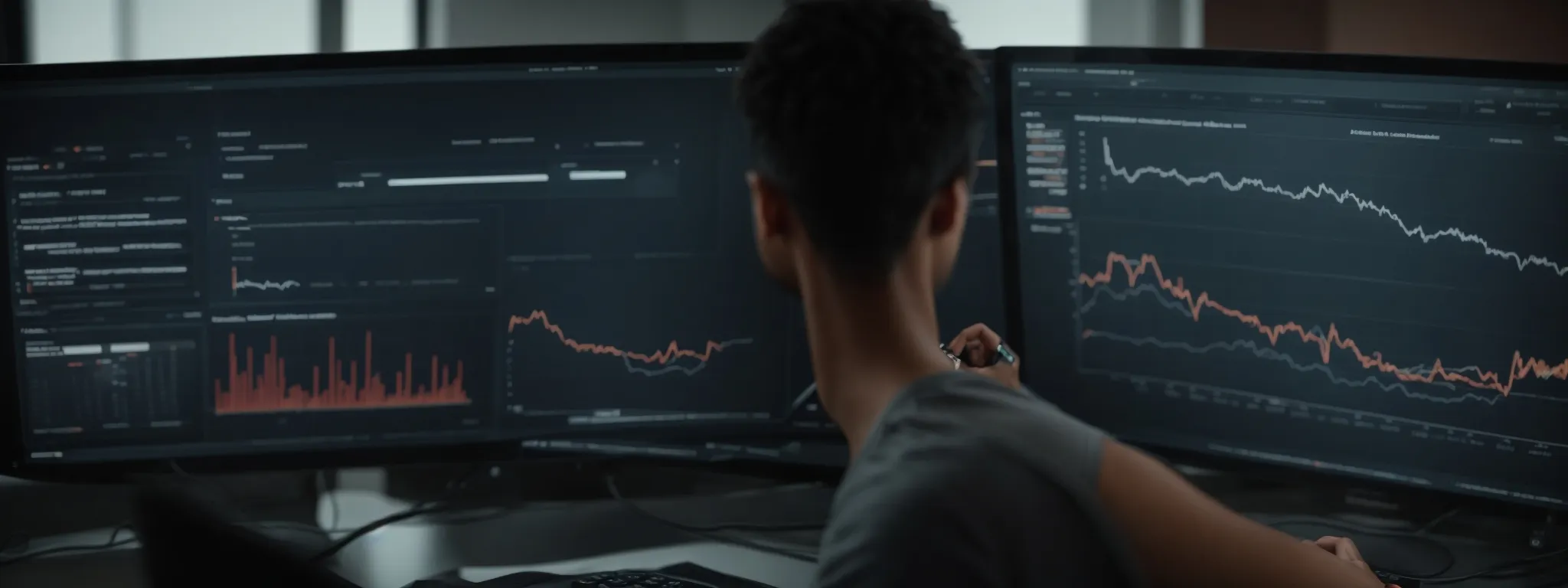Create Perfect SEO Brief Recap
How to Craft the Ultimate SEO Brief: A Comprehensive Recap Crafting a comprehensive SEO brief is an art that demands precision, insight, and a clear understanding of […]
How to Craft the Ultimate SEO Brief: A Comprehensive Recap
Crafting a comprehensive SEO brief is an art that demands precision, insight, and a clear understanding of one’s business goals and audience.
An effective SEO brief serves as the blueprint for campaigns, steering efforts toward tangible results while ensuring harmony between various content creation, technical requirements, and link building strategies.
Recognized for its prowess in the field, LinkGraph meticulously aligns SEO strategies with client objectives, utilizing the prowess of their Search Atlas tool to ensure each brief is as data-driven as it is actionable.
From pinpointing keyword research to outlining a robust backlink profile, their approach serves to clarify the trajectory for campaigns and set a benchmark for success.
Keep reading to unravel the essentials of an impactful SEO brief that can transform your search engine results and elevate your online presence.
Key Takeaways
- Crafting a Comprehensive and Adaptable SEO Brief Is Crucial for Campaign Success
- Regular Assessment and Role Clarity Within the SEO Team Promote Efficiency and Accountability
- Technical SEO, on-Page, and Off-Page Optimizations Are Essential for Improving Search Visibility
- Continuous Learning From Past Campaigns and Industry Changes Is Vital for SEO Agility
- Integrating SEO Efforts With Cross-Functional Collaboration Enhances Overall Strategy Effectiveness
Understanding the Objectives for Your SEO Brief

In the arena of search engine optimization, establishing a clear and concise SEO brief emerges as a decisive step for any campaign’s success.
It initiates with identifying the primary goals for your SEO endeavor, be it enhancing visibility, boosting organic traffic, or solidifying the backlink profile of your site.
Recognizing these objectives paves the way for LinkGraph’s SEO services to tailor strategies that resonate with your business goals.
Alongside goal setting, pinpointing the exact target audience and Market Segments ensures that every piece of website content and SEO activity is directed at those who matter most to your brand.
Furthermore, mapping out realistic timeframes for reaching SEO milestones allows businesses to monitor progress methodically, employing tools such as Search Atlas to maintain a strategic advantage in the dynamic landscape of search results.
It is in grasping these foundational concepts that companies transform their vision into actionable SEO campaigns that yield measurable outcomes.
Identify the Primary Goals for Your SEO Campaign
Embarking on an SEO campaign without a well-defined end point is akin to setting sail without a compass. Determining whether the quest is to scale the summit of Google search results, amplify a brand’s digital presence, or refine user engagement, lays a critical foundation for any SEO strategy, particularly with LinkGraph’s SEO Services ready to chart the course.
With objectives in place, LinkGraph employs meticulous keyword research, bolstered by the prowess of the Search Atlas SEO tool, to ensure that client aspirations align with the intricacies of search engine algorithms. This precise approach catalyzes the course of action, setting a confident trajectory toward achieving the targeted outcomes that clients envision for their digital landscape.
Clarify the Target Audience and Market Segmentation
To construct a campaign that truly resonates, one must first grasp the nuances of their audience: their preferences, behaviors, and search patterns. LinkGraph’s SEO services prioritize this understanding, ensuring each campaign is precision-targeted to reach the most relevant users, thus maximizing the impact and efficacy of the SEO efforts.
Defining market segments forms the cornerstone of any successful SEO strategy, creating a clear path for content creation and keyword targeting that speaks directly to each unique audience subset. This tailored approach not only enhances user experience but also positions the client’s website content to rank prominently within the pertinent search results:
- Analyze the audience demographics and interests.
- Segment the market based on user behavior and engagement.
- Customize SEO tactics to align with specific segment needs.
Set Realistic Timeframes for SEO Milestones
Setting realistic timeframes for achieving SEO milestones is imperative for maintaining clarity and focus throughout the optimization process. Such scheduling ensures clients of LinkGraph’s SEO services anticipate progress checkpoints and can recalibrate efforts if necessary to stay on track to meet their SEO goals.
The establishment of a well-crafted timeline acts as a beacon, guiding the SEO strategy while providing a structure for routine analysis of the efforts. This disciplined approach allows for agile responses to the ever-evolving nature of search engine algorithms and market trends:
- Developing initial SEO benchmarks for early wins.
- Scheduling regular assessments of SEO metrics to gauge campaign effectiveness.
- Setting incremental objectives in alignment with overarching business objectives.
The Anatomy of an Impactful SEO Brief

An expertly constructed SEO brief not only charts the course for a campaign but ensures its elements are synergistic and aligned with a client’s objectives.
The brief’s potency lies within its structure, beginning with an executive summary that encapsulates the campaign’s essence in a concise, clear narrative.
It enlists the delineation of roles and accountability for team members, fostering a collective responsibility towards the campaign’s success.
Moreover, the brief must outline key SEO strategies and tactics with precision, providing a transparent roadmap that directs all efforts toward improving search result standings and driving organic traffic.
Such an articulate document becomes the bedrock upon which impactful and consistent SEO outcomes are built.
Crafting a Clear and Actionable Executive Summary
Crafting a clear and actionable executive summary within an SEO brief is a crucial step for aligning expectations and laying the foundation for a successful strategy. It succinctly conveys the essences of the SEO plan, enabling clients to quickly grasp the campaign’s core aims and the methods that LinkGraph will employ to realize these objectives.
This section acts as a compass, guiding readers through the strategic journey that awaits their business. The summary serves to distill complex SEO propositions into a clear narrative, ensuring clients and all stakeholders are on the same page from the outset:
- Articulate the main SEO objectives to underline the campaign’s direction.
- Summarize strategies and tactics to give a clear view of the planned approach.
- Highlight any anticipated key performance indicators (KPIs) to monitor and evaluate progress.
Delineating Roles and Responsibilities Within the Team
Delineating roles and responsibilities within an SEO team is paramount to ensure clarity in task execution and accountability. Establishing a clear structure within the team not only promotes efficient workflow but also empowers members to own their contributions to the campaign’s overall success.
A well-defined team structure optimizes the use of resources, placing team members in the right positions to leverage their strengths: content creators specialize in persuasive narratives, while technical experts focus on eradicating SEO errors and boosting site health. Such an approach underscores LinkGraph’s commitment to a comprehensive and cohesive SEO strategy:
| Team Role | Responsibilities | Key Contributions |
|---|---|---|
| SEO Strategist | Developing overall SEO plans, orchestrating campaigns | Steering the campaign towards its objectives |
| Content Specialist | Creating SEO-optimized content, keyword integration | Engaging target audience with compelling content |
| Technical SEO Expert | Identifying and fixing technical SEO issues | Ensuring the website’s technical foundation is solid |
| Link Building Specialist | Curating backlink profile, establishing content partnerships | Strengthening domain authority through strategic backlinks |
Highlighting Key SEO Strategies and Tactics
A robust SEO brief breaks down the tactics that drive the strategy at its core, highlighting methods such as on-page optimization, link building, and content marketing. These tactics are not just buzzwords but actionable steps that LinkGraph takes to elevate the clients’ online presence and authority, always adhering to SEO best practices.
Every effective strategy outlined within the SEO brief directly addresses a specific aspect of the digital footprint, whether that is optimizing the site’s structure for technical SEO or crafting content that resonates with the intended audience. LinkGraph emphasizes the importance of these nuanced strategies as they collectively forge a path toward improved keyword rankings and enhanced visibility in search marketing efforts.
Research Essentials for a Strong SEO Brief

As the digital landscape becomes increasingly competitive, the formulation of a comprehensive SEO brief hinges profoundly on foundational research.
The brief’s potency is immensely boosted by conducting thorough keyword research to unravel the queries driving user search behavior, coupled with a meticulous analysis of competitors’ strategies, providing a strategic edge.
Crucially, a credible assessment of current SEO performance metrics lends actionable insights, making the difference between an ordinary SEO plan and a conquering strategy.
These components form the pillars of research that undergird any high-caliber SEO brief, essential for those seeking to forge a majestic digital presence.
Conducting Thorough Keyword Research
Embarking on keyword research is a journey to the heart of user intent, a crucial endeavor that underpins any successful SEO strategy. LinkGraph’s SEO services harness the analytical power of Search Atlas, delving deep into the intricacies of relevant, high-traffic keywords that promise to bridge the gap between a client’s content and their search-savvy audience.
Through diligent exploration and analysis, LinkGraph crafts a list of targeted keywords woven seamlessly into the fabric of a client’s digital narrative: rich in potential for search engine triumph and harmonized with the voice of the brand. The execution of this research forms the backbone of a robust SEO plan, ensuring precision in alignment with audience search patterns:
| Research Phase | Objectives | Tools | Outcome |
|---|---|---|---|
| Initial Analysis | Understanding the landscape of relevant search queries | Search Atlas | A broad list of potential keywords |
| Detailed Evaluation | Pinpointing the highest-opportunity keywords | Search Atlas SEO Tool | A curated list of targeted keywords for the brief |
Identifying Competitors and Analyzing Their Strategies
An integral part of shaping an impactful SEO brief is the strategic identification and analysis of competitors. By discerning who the key players are in your industry, LinkGraph’s SEO services employ a data-driven approach to uncover and scrutinize the tactics and techniques these entities use to dominate search engine results.
Through this analytical process, LinkGraph discerns the strengths and weaknesses in competitors’ strategies, gleaning valuable insights that inform and refine their clients’ SEO approach. By understanding the Competitive Landscape, LinkGraph ensures its clients are not just part of the conversation but leading the dialogue within their sector.
Assessing Current SEO Performance Metrics
An accurate evaluation of current SEO performance metrics forms a critical aspect of any comprehensive SEO brief. LinkGraph’s meticulous approach to SEO reporting includes analyzing vital metrics such as traffic conversions, keyword rankings, and user engagement to gauge the existing SEO health of a client’s online presence.
This assessment provides a clear benchmark from which LinkGraph, leveraging insights from its Search Atlas tool, shapes an SEO content marketing strategy that not only addresses previous shortcomings but also amplifies successes to optimize future performance for the client’s site in Google search results.
Outlining the SEO Brief With Organized Information

For a document of its importance, the methodical organization of an SEO brief is non-negotiable.
Precision and clarity become the guiding principles as the information is segmented into logical, interrelated sections that advance the brief’s utility.
Using visuals that channel complex data into digestible formats expedites comprehension and supports decision-making processes.
Additionally, formatting plays a pivotal role in fostering an ease of reference that ensures swift access to key information at a glance.
A polished SEO brief not only communicates the finer points of the proposed strategy but also serves as a testament to an agency’s professionalism and attention to detail, exemplified by LinkGraph’s commitment to structured and insightful deliverables.
Segregating Information Into Logical Sections
An impeccable SEO brief demands the strategic distribution of content into well-defined sections, enhancing the document’s navigability and purpose. LinkGraph meticulously organizes the brief to facilitate quick access and interpretation by stakeholders, ensuring that each segment effectively conveys key information from SEO strategies to expected outcomes.
This segmentation not only categorizes the components of an SEO campaign but also aids in tracing the progression of ideas and tactics employed. LinkGraph’s diligence in structuring these sections bolsters the document’s utility, permitting clients to scrutinize aspects of their customized SEO plan effortlessly and with comprehensive understanding.
Using Visuals to Enhance Data Interpretation
In the intricate dance of numbers and metrics that embodies SEO, visual aids stand as beacons of clarity. Graphs, charts, and infographics transform sprawling data sets into an elegant narrative, enabling the reader to absorb complex information swiftly and with greater comprehension.
Visual elements act as translators for the rich language of SEO analytics, ushering in an era where insights leap from the page, commanding attention and understanding:
| SEO Element | Visual Aid | Benefit |
|---|---|---|
| Keyword Rankings | Line Graph | Depicts trend over time for keyword positions. |
| Backlink Growth | Bar Chart | Illustrates increment in the number of backlinks. |
| User Engagement | Pie Chart | Breaks down session durations and interactions. |
| Organic Traffic | Heat Map | Highlights peak times and geographic hotspots. |
Formatting for Clarity and Quick Reference
In the pursuit of precision, LinkGraph meticulously formats each SEO brief for optimal clarity, ensuring that crucial data and strategic insights are accessible with minimal effort. The use of headings, bullet points, and clearly marked sections allows readers to navigate the document efficiently, effectively reducing the cognitive load for busy professionals and decision-makers.
The deployment of a thoughtful layout in the SEO brief facilitates swift referencing during strategic discussions and progress audits. An intelligently arranged document becomes an invaluable tool, allowing stakeholders to pinpoint exact information swiftly and to address specific points succinctly:
- Employ clear and descriptive headings to categorize content.
- Utilize bullet points for easy scanning of key details.
- Incorporate white space to prevent visual crowding and enhance readability.
Aligning SEO Efforts With Content Requirements

In a quest to dominate the digital plain, aligning SEO efforts with content requirements becomes an indispensable strategy.
As businesses navigate the vast territories of online marketing, it’s critical to determine which types of content and formats resonate with users and search engines alike.
Devising meticulous guidelines for content creation and optimization ensures that every article, video, or infographic not only serves the audience but also strengthens the site’s SEO foundation.
A comprehensive integration of on-page and off-page SEO techniques further fortifies the content’s visibility and engagement potential, culminating in an SEO brief that is both informative and actionable.
This alignment sets the stage for a symphony of well-tuned tactics that beckon success in the competitive arena of Google search results.
Determining Content Types and Formats for SEO Success
Determining the optimal mix of content types and formats is a cornerstone to SEO success, requiring a keen eye for the evolving preferences of both search engines and readers. The union of engaging information with SEO-friendly formats is not serendipity but the result of strategic deliberation and data-driven decision-making.
To ensure that the content meets the rigors of search algorithms and the appetites of an audience, a meticulous selection process is essential. LinkGraph’s discerning approach zeroes in on formats proven to hook readers and sustain attention, from authoritative blog posts to interactive videos:
- Evaluating content performance metrics to identify high-engagement formats.
- Assessing user intent to create relevant and compelling SEO content.
- Employing diverse media to cater to different preferences and improve user experience.
Setting Content Creation and Optimization Guidelines
Setting the stage for content that both entices visitors and caters to search engines necessitates well-defined Content Creation and Optimization Guidelines. LinkGraph’s seasoned strategists develop comprehensive protocols for content, ensuring each element, from headline to call to action, adheres to SEO best practices while engaging the reader.
These guidelines serve as a blueprint, articulating the specific requirements for crafting SEO-enriched content that harmonizes with the formulated SEO brief:
- Dictating keyword density and placement for optimal search engine recognition.
- Suggesting title tag and meta description tactics to enhance click-through rates.
- Prescribing use of internal linking to improve site architecture and user navigation.
Through scrupulous adherence to these guidelines, LinkGraph ensures that each piece of content not only contributes to elevated search engine positioning but also to a refined user journey through the website. The careful orchestration of such details amplifies the potential for conversions and sustains audience engagement.
Integrating on-Page and Off-Page SEO Techniques
Effective SEO strategy demands a harmonious fusion of on-page and off-page techniques. LinkGraph meticulously calibrates each aspect of a website’s on-page elements—from the optimization of meta tags to ensuring high-quality, keyword-rich content—while simultaneously orchestrating a robust off-page approach that encompasses authoritative link-building efforts and social media engagement to elevate domain authority and organic search presence.
The confluence of these techniques within an SEO campaign is not merely additive but multiplicative, yielding a synergistic effect that bolsters search engine rankings. LinkGraph champions this integrated approach, understanding that the interplay between on-page precision and off-page advocacy forges a comprehensive digital footprint that both captivates the target audience and satisfies the criteria of search engines.
Incorporating Technical SEO Specifications in Your Brief

In the endeavor to elevate a website’s standing in the fiercely contested realm of search results, incorporating technical SEO specifications into the brief is indispensable.
A fine-tuned SEO brief meticulously addresses the intricacies of site structure and navigation, outlines the quintessential on-page elements and architecture, and recommends crucial technical fixes that sharpen search visibility.
It is a symphony of strategic alterations and enhancements, each note played with precision to orchestrate a seamless user journey and to signal search engine crawlers with clarity and efficiency.
Addressing Site Structure and Navigation Improvements
Addressing site structure and navigation enhancements is a pivotal element in any technical SEO blueprint; it dictates the ease with which both users and search engine crawlers can traverse a website. LinkGraph prioritizes the fluidity of user movement through intuitive layout designs, creating logical hierarchies and streamlined pathways that contribute indispensably to holistic SEO success.
Assimilating the complexities of an effective site architecture not only elevates the user experience but also intensifies the site’s appeal to search engine algorithms. LinkGraph meticulously assesses and enriches site navigation, ensuring each webpage is accessible within a few clicks from the homepage, hence fostering a conducive environment for indexing and ranking:
| Aspect of Site Structure | Focus Area | Benefit |
|---|---|---|
| Hierarchy Development | Creating an intuitive structure and categorization | Facilitates user navigation and crawler indexing |
| Internal Linking Strategy | Strategically placing internal links | Boosts page authority and user engagement |
| Navigation Optimization | Simplifying and clarifying menu options | Enhances user experience and dwell time |
| URL Structuring | Ensuring clean and readable URLs | Aids in maintaining clear pathways for site exploration |
Outlining Essential on-Page Elements and Architecture
Crucial to any SEO brief, outlining essential on-page elements and architecture requires a thorough understanding of content hierarchy and the importance of meta-data. LinkGraph’s expertise ensures that each page features meticulously crafted title tags, meta descriptions, and header tags—all vital to clearly conveying the content’s structure and relevance to search engine crawlers. These elements serve as the fundamental building blocks for a well-architected webpage that combines technical prowess with user-centric design.
LinkGraph champions the meticulous integration of schema markup as a catalyst for enhancing the clarity of a site’s content for search engines. This approach underlines essential information such as business hours, contact information, and reviews, leading to rich snippets in search results that are easier to index and more attractive to potential customers. The architectural finesse of on-page SEO ensures the audience encounters no barriers when navigating the site, while search engines are presented with crystal-clear signals of the page’s intent and context.
Recommending Technical Fixes for Improved Search Visibility
LinkGraph tirelessly scrutinizes a website to unearth technical shortcomings that may impede its search visibility, subsequently charting a course for rectifications. By highlighting issues such as slow loading speeds, mobile responsiveness, or improper 301 redirects, LinkGraph’s specialists formulate precise technical recommendations that sharpen a site’s competitive edge in search engine rankings.
This relentless approach to resolving technical SEO obstacles ensures that each facet of the client’s online presence is groomed for optimal performance. The team at LinkGraph leaves no stone unturned, ensuring that search engines favor the refined technical landscape of the client’s website, thereby improving its visibility and prominence in the digital realm.
Setting Benchmarks and KPIs for SEO Tracking

To bring the immense task of search engine optimization into focus, setting benchmarks and defining key performance indicators (KPIs) for SEO tracking is indispensable.
These quantifiable measures provide clarity in assessing the effectiveness of an SEO brief and serve as guideposts for the journey toward digital excellence.
Deciding on appropriate reporting intervals and formats establishes a rhythm for evaluation, while a robust framework for ongoing audits ensures continuous improvement and adaptation.
Such systematic oversight empowers clients to witness the tangible progress of LinkGraph’s SEO services, illustrating how strategies unfold into impactful results that align seamlessly with their broader marketing objectives.
Defining Quantifiable Measures for SEO Effectiveness
Defining quantifiable measures for SEO effectiveness emboldens businesses to gauge the impact of their search engine optimization strategies with accuracy and confidence. Essential metrics such as organic search traffic, conversion rates, and bounce rates serve as the litmus test for the efficacy of the implemented SEO tactics.
By establishing these specific KPIs, a company anchors its SEO strategy in measurable outcomes, aligning optimization endeavors with overarching business goals. This process culminates in a framework that transforms abstract SEO concepts into tangible proxies for success:
| KPI | SEO Metric | Purpose |
|---|---|---|
| Organic Search Traffic | Visitor numbers from non-paid search | Gauges direct SEO impact on site traffic |
| Conversion Rate | Percentage of visitors completing a goal | Measures SEO’s role in driving desired actions |
| Bounce Rate | Rate of single-page sessions by visitors | Assesses user engagement and content relevance |
Deciding on Reporting Intervals and Formats
LinkGraph’s SEO services acknowledge the importance of setting precise reporting intervals, which serve as a backbone for consistent SEO analysis. Monthly or quarterly reporting rhythms, tailored to the pace of the client’s business and SEO activities, ensure a punctual and thorough review of the campaign’s impact and trajectory.
When formulating SEO reports, the adoption of formats that highlight critical data in a concise and reader-friendly manner is a priority. LinkGraph’s adept utilization of clear, structured formats in SEO reporting crystallizes complex metrics into actionable insights, facilitating strategic decision-making for clients navigating the search engine optimization landscape.
Establishing a Framework for Ongoing SEO Audits
LinkGraph’s seasoned team of SEO specialists emphasizes the significance of establishing a framework for Ongoing SEO Audits, a rigorous process designed to ensure a website’s continuous alignment with search engine algorithms and industry best practices. Such a framework initiates a cycle of evaluation and refinement, positioning clients to capitalize on search trends and maintain a competitive edge.
Implementing this suite of recurrent evaluations forms the backbone of dynamic SEO management, allowing for the identification of emerging opportunities as well as timely mitigation of potential issues. In this respect, LinkGraph’s commitment to structured audits is a testament to the agency’s dedication to delivering sustained SEO excellence and improved search visibility for clients across a diverse array of industries.
Communication and Alignment Across Departments

In the meticulous construction of an ultimate SEO brief, one cannot underestimate the significance of seamless communication and alignment across various departments.
As the digital environment thrives on collaborative efforts, fostering cross-functional synergy becomes pivotal for the intricate tapestry of SEO to come to fruition.
By imbedding the brief into project management tools, ensuring that regular review meetings become a mainstay for campaign revisions, and enabling every team member to move in unison towards the set SEO milestones, businesses can secure an edge in the search engine landscape.
This alignment is not merely about keeping all teams informed, but about harmonizing their unique expertise to magnify the campaign’s success.
Facilitating Cross-Functional Collaboration
Facilitating cross-functional collaboration is pivotal to maintaining a harmonious and holistic SEO campaign. Achieving this requires clear articulation of the SEO brief across departments, ensuring each team understands how their role contributes to the collective SEO goals.
Integration of various departments, from marketing to IT, paves the way for innovative solutions that address multiple facets of the SEO strategy. When professionals align their expertise with a clear understanding of the SEO brief, they create a unified force capable of propelling a company’s search engine ranking to new heights:
| Department | Contribution to SEO | Benefit of Collaboration |
|---|---|---|
| Marketing | Content creation and keyword targeting. | Ensures brand messaging is consistent and SEO-driven. |
| IT | Technical website optimization. | Enhances website structure and performance for SEO. |
| Customer Support | Feedback on user experience and content relevance. | Improves client engagement and retention through SEO insights. |
Implementing the Brief Into Project Management Tools
Integrating the SEO brief into project management tools serves as a transformative step towards operational excellence. LinkGraph ensures seamless digital collaboration by embedding strategic SEO directives within the mechanisms that dictate workflow and task management.
- Establishing access to the SEO brief within project management interfaces enables real-time updates and task tracking.
- Promoting accountability through assignment features linked to SEO tasks derived from the brief.
- Facilitating interdepartmental coordination by sharing milestones and progress within a shared digital environment.
Such incorporation not only streamlines the execution process but also maintains a high level of visibility for SEO objectives. This technique empowers teams to stay attuned to evolving SEO landscapes and adjust their tactics efficiently, in alignment with the strategic path outlined by LinkGraph’s expertise.
Regular Review Meetings for SEO Campaign Adjustments
Convening regular review meetings is a cornerstone in refining and enhancing an SEO campaign. These sessions provide a platform for cross-functional teams at LinkGraph to bring their collective insights to the table, enabling timely adjustments and strategic pivots in response to analytical findings and emerging trends.
The agility of a company’s SEO strategy is fortified during these collaborative reviews, where performance data is dissected and the efficacy of current tactics is scrutinized:
- Assessing the impact of SEO activities against predetermined KPIs.
- Identifying areas of the campaign that require immediate attention or enhancement.
- Brainstorming innovative SEO tactics to outmaneuver competitors.
Reviewing and Refreshing the SEO Brief Overtime

As businesses endure the dynamic ebb and flow of digital landscapes, the importance of revisiting and refining the SEO brief over time becomes paramount.
The document is not static; it breathes, flexes, and evolves, drawing on past campaigns’ learnings, adapting to the relentless tide of algorithmic shifts, and embracing the philosophy of continuous improvement.
In the quest for perennial relevance and performance in search engine rankings, organizations must embed adaptability into their SEO approach.
Thus, the operative SEO brief emerges as a living entity, weathered and wise from the historical undertakings, poised to navigate the ceaseless innovation intrinsic to the realm of agile SEO management.
Incorporating Learnings From Past SEO Efforts
In the fast-paced world of digital marketing, the astuteness of incorporating learnings from past SEO efforts into the continuous refreshment of an SEO brief cannot be overstated. By meticulously analyzing performance data, LinkGraph’s SEO services extract actionable insights that inform proactive adjustments to an evolving strategy.
The practice of reflective analysis ensures that previous triumphs amplify future tactics, while any encountered obstacles steer the refinement process, anchoring the brief in real-world experience and success. This hindsight lends the foresight necessary to devise cunning approaches that enable businesses to ascend the search engine echelons with agility and precision:
| SEO Element | Analysis Focus | Application in Refreshed Brief |
|---|---|---|
| Keyword Performance | Reviewing keyword rankings over time and search volume trends | Refining keyword strategy to prioritize high-impact terms |
| Content Engagement | Evaluating metrics such as bounce rates and average session durations | Adaptation of content styles and formats to enhance user retention |
| Technical SEO Health | Assessing page load speeds and crawl errors detected | Implementing technical optimizations to improve site performance |
| Backlink Profile | Monitoring the growth and quality of inbound links | Adjusting link building strategies to emphasize authoritative sources |
Adapting to Algorithm Updates and Industry Changes
Within the fluid environment of search engine spheres, vigilance towards algorithm updates and industry changes is of paramount importance. LinkGraph’s SEO strategists maintain a finger on the pulse of these fluctuations, enabling the periodic recalibration of SEO briefs to align with the latest Google search engine adjustments and market trends.
Such adaptability is crucial, as it ensures that SEO strategies endorsed by LinkGraph remain resilient and forward-looking, unfazed by evolving algorithms that dictate digital visibility. By proactively integrating new industry practices and technological advancements, LinkGraph’s SEO brief remains a beacon of relevance, guiding clients through the ever-changing tides of digital optimization.
Continuous Improvement and Agile SEO Management
In an environment where digital markets fluctuate with rapid advancements, continuous improvement and agile SEO management are not just advantageous; they are imperative for success. LinkGraph’s SEO services champion the refinement of strategies through an agile framework, ensuring that every SEO campaign can pivot with precision, as market dynamics and technological innovations emerge.
The cornerstone of agile SEO management lies in the ability to swiftly integrate fresh insights and actionable data into ongoing campaigns. This proactive responsiveness defines LinkGraph’s approach, empowering clients to maintain a competitive stance amidst the shifting algorithms and user behavior trends that characterize the digital SEO landscape:
| SEO Management Aspect | Agility Factor | Client Advantage |
|---|---|---|
| Data-Driven Insights | Quick incorporation of analytical findings | Alignment with current market demands |
| Strategy Adaptation | Responsive adjustment to search trends | Sustained relevance in search rankings |
| Technological Evolution | Seamless adoption of new tools and practices | Elevated performance in evolving digital ecosystems |
Conclusion
Crafting the ultimate SEO brief is essential for the success of any search engine optimization campaign.
It begins with setting clear objectives and identifying the target audience, ensuring LinkGraph’s SEO services develop strategies that align with business goals.
Realistic timeframes for reaching milestones are key for tracking progress, using tools like Search Atlas for strategic advantages.
Roles within the SEO team must be well-defined for accountability and efficient workflow.
Key SEO strategies and tactics, such as on-page optimization and link building, should be laid out in the brief for transparency and direction.
Research is foundational, including thorough keyword research, competitor analysis, and assessment of current SEO performance metrics to inform the brief.
An organized and structured SEO brief, enhanced with visuals and clear formatting, is crucial for communication and reference.
Content must be aligned with SEO requirements, with guidelines for creation and optimization to ensure resonance with both users and search engines.
Technical SEO specifications are integral for site structure, on-page elements, and recommending technical fixes for improved search visibility.
Setting benchmarks and determining KPIs allow for effective tracking of SEO effectiveness, with regular reporting intervals and formats for consistent review.
Cross-departmental communication ensures alignment and synergy, amplified by using project management tools for coordination and regular review meetings for campaign adjustments.
Lastly, the SEO brief should be a living document, incorporating past learning, adapting to algorithm updates, and guided by a philosophy of continuous improvement.
Agile SEO management allows for the swift integration of new insights and data, maintaining the competitive edge in dynamic digital markets.















































































